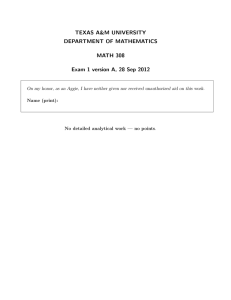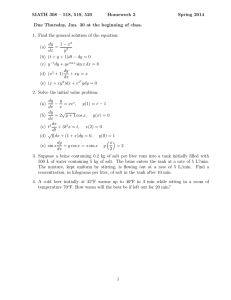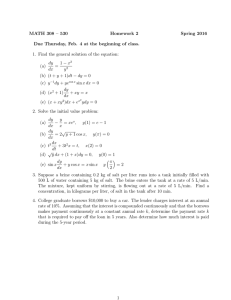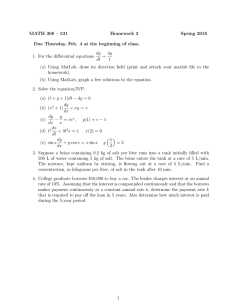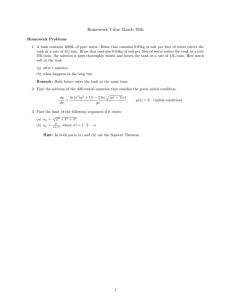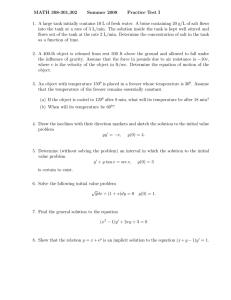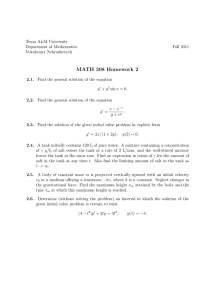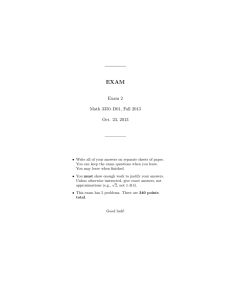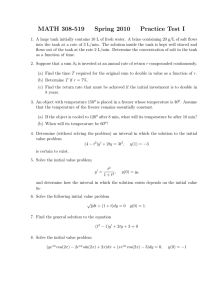M.S. COMPREHENSIVE EXAMINATION IN APPLIED MATHEMATICS January 17, 2001
advertisement
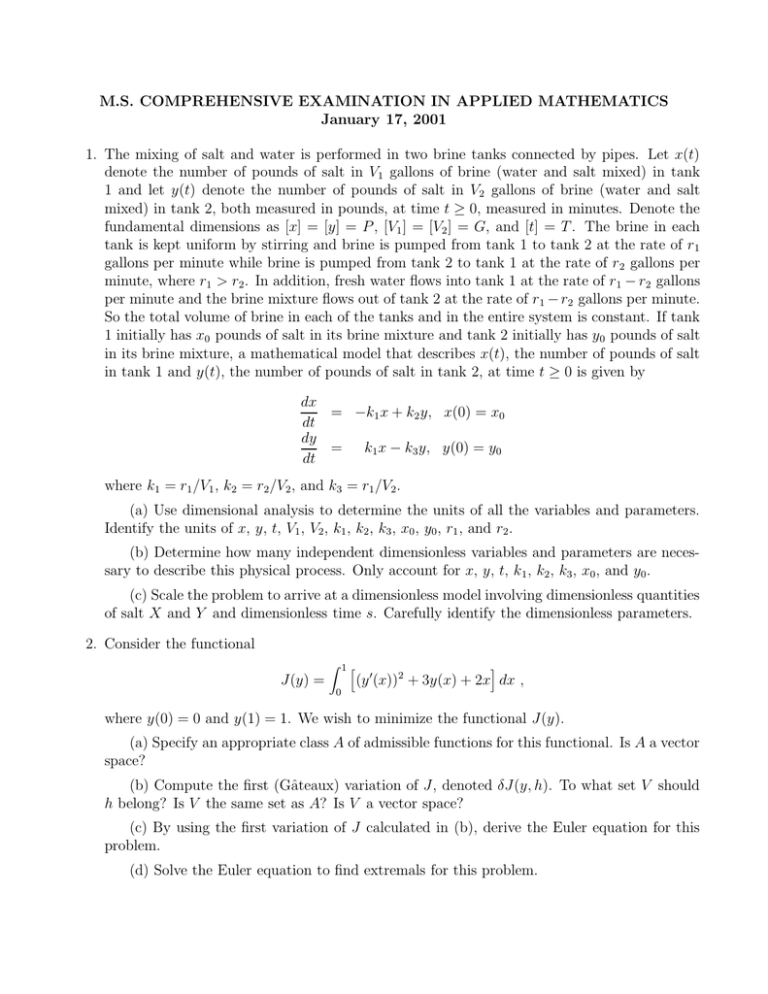
M.S. COMPREHENSIVE EXAMINATION IN APPLIED MATHEMATICS January 17, 2001 1. The mixing of salt and water is performed in two brine tanks connected by pipes. Let x(t) denote the number of pounds of salt in V1 gallons of brine (water and salt mixed) in tank 1 and let y(t) denote the number of pounds of salt in V2 gallons of brine (water and salt mixed) in tank 2, both measured in pounds, at time t ≥ 0, measured in minutes. Denote the fundamental dimensions as [x] = [y] = P , [V1 ] = [V2 ] = G, and [t] = T . The brine in each tank is kept uniform by stirring and brine is pumped from tank 1 to tank 2 at the rate of r1 gallons per minute while brine is pumped from tank 2 to tank 1 at the rate of r2 gallons per minute, where r1 > r2 . In addition, fresh water flows into tank 1 at the rate of r1 − r2 gallons per minute and the brine mixture flows out of tank 2 at the rate of r1 − r2 gallons per minute. So the total volume of brine in each of the tanks and in the entire system is constant. If tank 1 initially has x0 pounds of salt in its brine mixture and tank 2 initially has y0 pounds of salt in its brine mixture, a mathematical model that describes x(t), the number of pounds of salt in tank 1 and y(t), the number of pounds of salt in tank 2, at time t ≥ 0 is given by dx = −k1 x + k2 y, x(0) = x0 dt dy = k1 x − k3 y, y(0) = y0 dt where k1 = r1 /V1 , k2 = r2 /V2 , and k3 = r1 /V2 . (a) Use dimensional analysis to determine the units of all the variables and parameters. Identify the units of x, y, t, V1 , V2 , k1 , k2 , k3 , x0 , y0 , r1 , and r2 . (b) Determine how many independent dimensionless variables and parameters are necessary to describe this physical process. Only account for x, y, t, k1 , k2 , k3 , x0 , and y0 . (c) Scale the problem to arrive at a dimensionless model involving dimensionless quantities of salt X and Y and dimensionless time s. Carefully identify the dimensionless parameters. 2. Consider the functional J(y) = Z 1 0 h i (y 0 (x))2 + 3y(x) + 2x dx , where y(0) = 0 and y(1) = 1. We wish to minimize the functional J(y). (a) Specify an appropriate class A of admissible functions for this functional. Is A a vector space? (b) Compute the first (Gâteaux) variation of J, denoted δJ(y, h). To what set V should h belong? Is V the same set as A? Is V a vector space? (c) By using the first variation of J calculated in (b), derive the Euler equation for this problem. (d) Solve the Euler equation to find extremals for this problem. 2 3. Use singular perturbation techniques to find the leading order uniform approximation to the solution of the boundary-value problem εy 00 (t) + 2y 0 (t) + 2y(t) = 0, 0 < t < 1 y(0) = 0 y(1) = 1 The behavior of the solution y for ε = .1 on 0 ≤ t ≤ 1 is shown in Figure 1. Sfrag replacements 2.2 2 1.8 1.6 1.4 y 1.2 1 0.8 0.6 0.4 0.2 0 0.2 0.4 t 0.6 0.8 Figure 1: Solution y(t) for ε = .1 1

